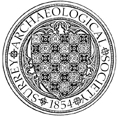Wiggins Yard, Godalming
Watching brief by S Porter of TVAS. No finds of archaeological interest were recovered. A peat deposit was revealed and sampled, which provided evidence about the environmental conditions of the site, although the material was not concluded to be of significant age as it was directly sealed by later post- medieval deposits.


